Lord Leverhulme commissioned a replica of Liverpool Castle to be built on his Rivington estate of Lever Park, near Horwich. He had read a work about the original castle by E.W. Cox written in 1892. The description of the Liverpool castle site struck him as being similar to the promontory of Coblowe within his estate. Coblowe is a rocky area that overlooks the Lower Rivington Reservoir. He concluded that this would be an ideal place to resurrect the lost Liverpool stronghold.

Work began in 1912 using locally quarried gritstone. The construction proceeded very slowly with only a few stone masons and labourers being employed on the project. It was never completed as work stopped after Leverhulme’s death in 1925.
However, the replica castle was always meant to look like a ruin, being based not on what Liverpool Castle looked like at the height of its defensive power, but in its damaged state after the Civil War. Now, as plants colonise its walls, we are left with a ruin that reproduces faithfully many of the buildings and features of the original.
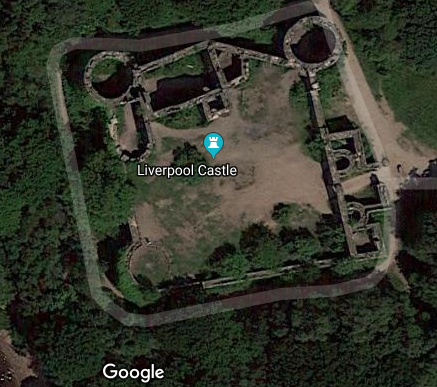
Nothing remains of the original Liverpool Castle, although you can still visit the site of the structure. Today the Queen Victoria Monument stands in Derby Square, Liverpool and a plaque marks the fact that the castle used to be located there. See our full page on the castle and its history here.

A visit to the replica castle at Rivington gives you a good sense of how it would have appeared. Although various sources claim this is a scale model, we have been unable to find out which scale has been used, and how much larger the rooms in real castle would have been.
Guide to the Replica Castle
Note: The interior of the buildings can be muddy and large puddles form after heavy rain, so wear your boots!
Enter through the Barbican area (G) that would have sat just in front of the Gatehouse (F). If you turn left you can go into one of the Square Towers (E) of the Gatehouse and see a large fireplace. In the actual castle the Gatehouse was one of the most intact parts in its later days, and tenants lodged within had to be evicted before final demolition could take place.
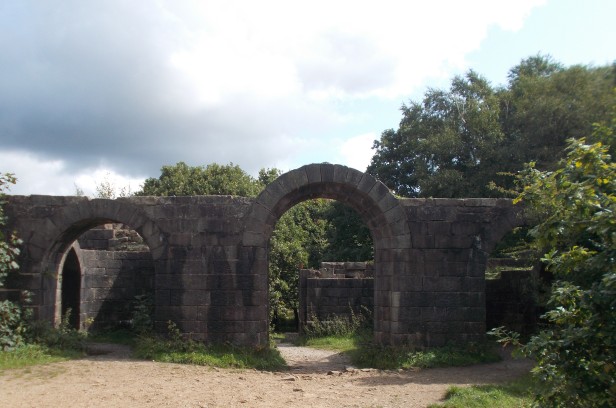
For the rest of the tour, keep right as we head around the rooms off the Bailey courtyard in an anticlockwise direction.
Head right to the North West or Great Tower (N). Note the steps that have been taken off the inner wall, probably for safety reasons to stop people climbing up to the next level. Once inside the Great Tower, you can look up to see replica slit windows and a fireplace on the first floor.
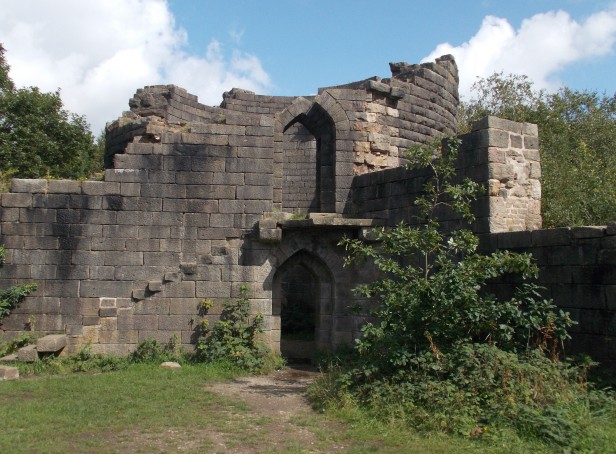
Go back to the central courtyard and now enter the kitchens area (T). In the real Liverpool Castle this probably had a bakehouse and brewhouse attached.
Once again, go back to the courtyard and go through the couple of arches that enter and exit the porch leading to the Great Hall. In the real castle, a chaplain’s room existed above the porch.
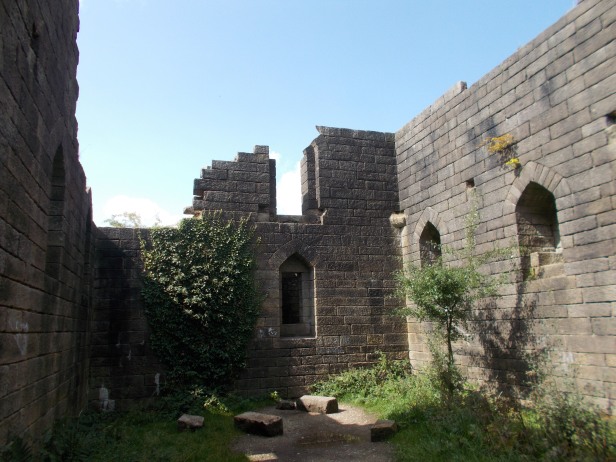
Standing in the Great Hall you can see lines of recessed arched windows. There would have also been private apartments above the hall in the real castle, this hall area forming the main part of the ‘Keep’. When you leave the hall look out for the narrow passage way that runs into the South West tower.
The next easily identifiable room is the chapel, with its curved semi-circular wall. Leave the chapel and follow the curtain wall to the very low remains of the South East or New Tower. This gives views out towards the reservoir.
It’s well worth looking at the outside of the castle walls and towers. Leave through the Gatehouse and do a complete circuit and you’ll see just how large and impressive the Great Tower and the Keep Tower are. The ivy covered parts really give the place the look of a picturesque ruin from the outside, which is presumably the landscape feature that Leverhulme was trying to achieve.
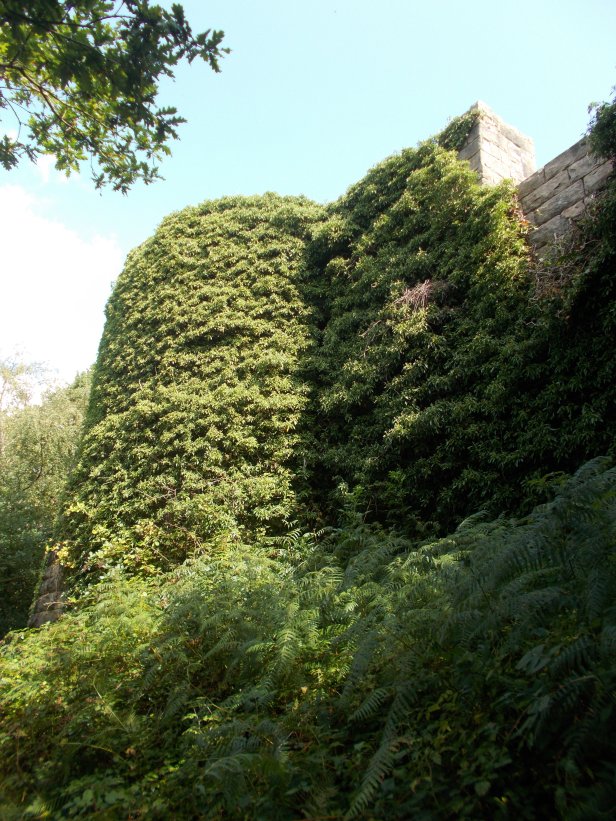
A Good Site is Always a Good Site
Coblowe as a rocky outcrop had caught Leverhulme’s eye. We strongly suspect that this was once a Bronze Age burial mound, overlooking the valley below. The word ‘Lowe’ often means burial mound – many of the Lowe names in the Peak District have provided the archaeology to prove this when dug. Unfortunately in Lancashire, the high demands of agriculture to feed the population of the first industrial county in the world means that most of our burial mounds have been destroyed.
The valley has been flooded to form the lower reservoir, which would have had a river flowing through it in the past. A common feature of the Bronze Age is to have a burial mound on a high point, overlooking a natural boundary such as a river. Interestingly, Coblowe looks out onto another Lowe site on the opposite bank – Roscoe Lowe. Travelling north on the M61 this appears on your right. The rising ground coupled with the name hints that this too was a Bronze Age burial mound. Nothing probably remains of it now, as it seems to have an access point to an underground reservoir on top of it.
If you want to know more about the history of the real Liverpool Castle, do have a look at our page on it here.
For more on Rivington and its role during World War 2, have a look at this page on our Lancashire at War website here
Site visited by A. and S. Bowden 2018
Access
There are two possible parking spots to see the castle, and both car parks are free.
Park at Rivington Reservoir Car Park, just off Rivington Lane. Head in a North Westerly direction on the path to reach a tree lined avenue that takes you to the castle.
Alternatively, for a longer walk park at the Great House Barn, go into the woods past Go Ape and head for the lower reservoir. Keep the reservoir on your right and the path will lead you to the castle.
Nearby
The Suffragette Arson Attack at Rivington
References
Leverhulme’s Rivington, M.D. Smith (1998) Wyre Publishing
The Changing Face of Liverpool 1207-1727 : Archaeological Survey of Merseyside. Edited by Susan Nicholson (1981) University of Liverpool, Merseyside County Council/Merseyside County Museum
Liverpool a Landscape History, Martin Greave (2013) The History Press
The History of Rivington : The Castle, West Pennine Moors Area Management Committee, undated leaflet available from Rivington Great House Information Centre
https://historicengland.org.uk/listing/the-list/list-entry/1164955
Comments are closed.